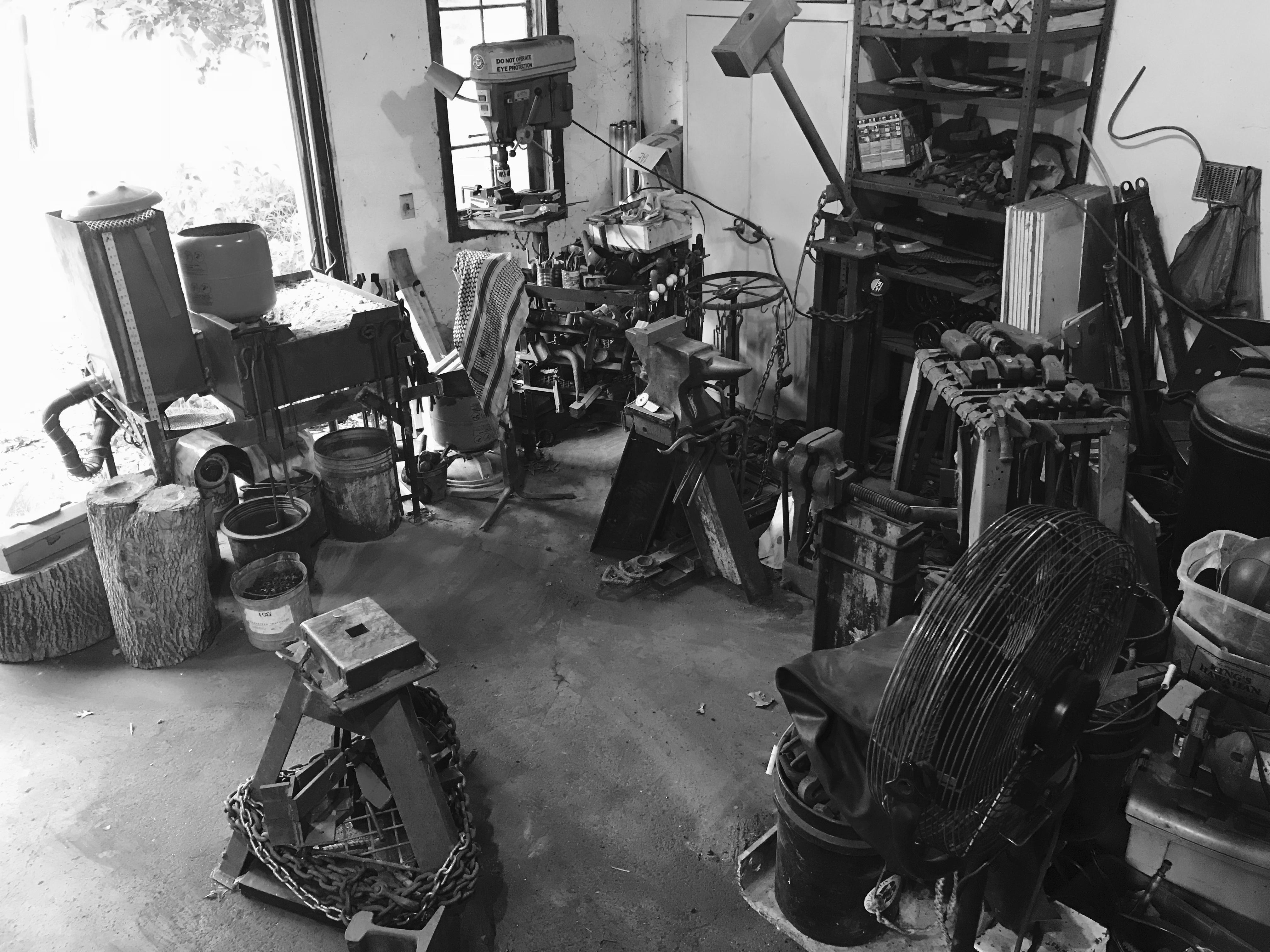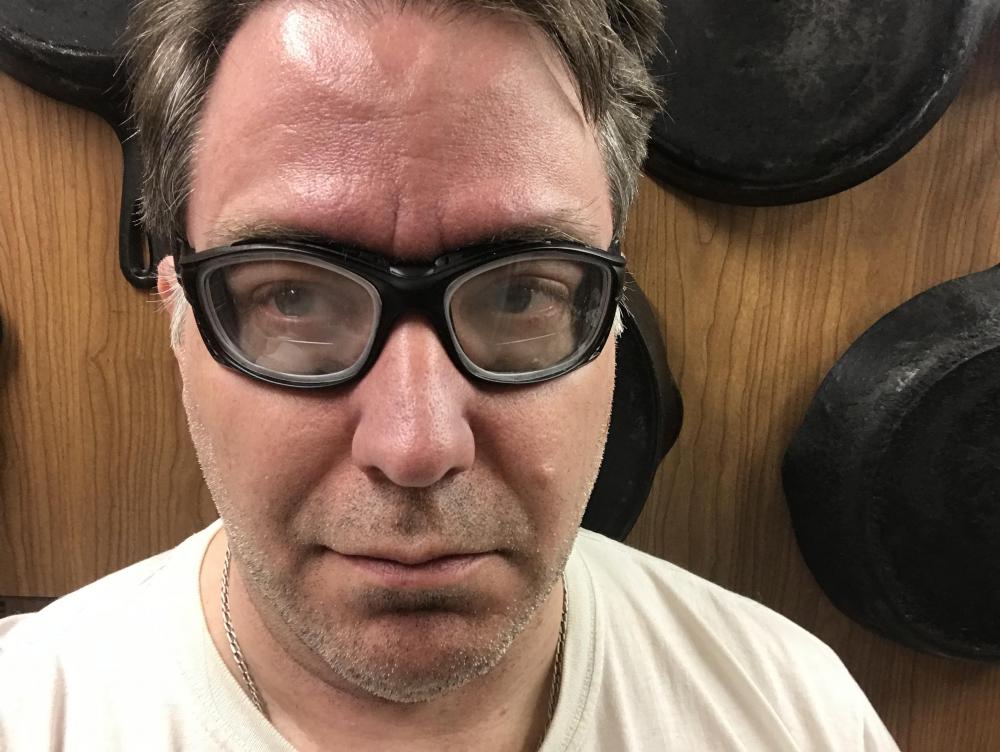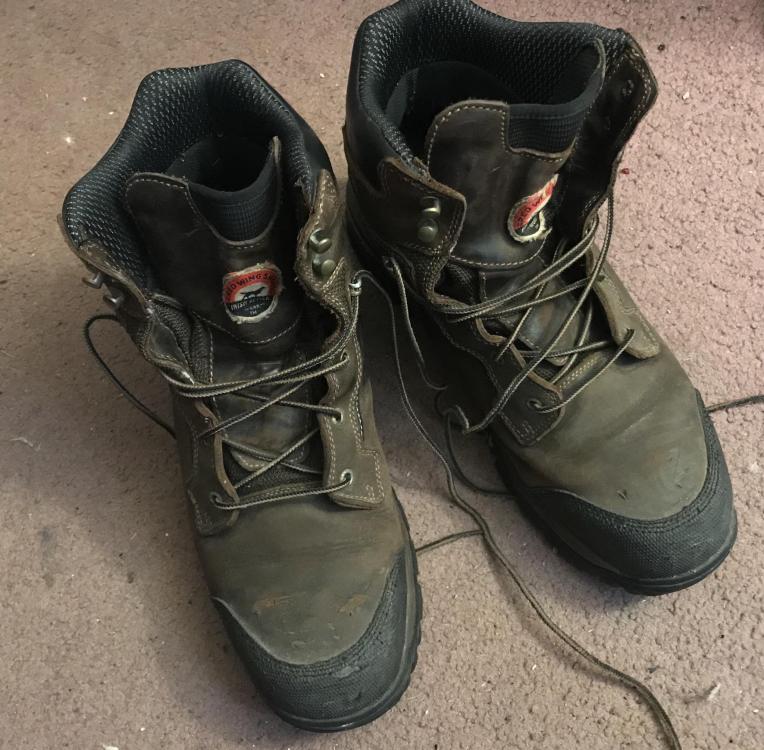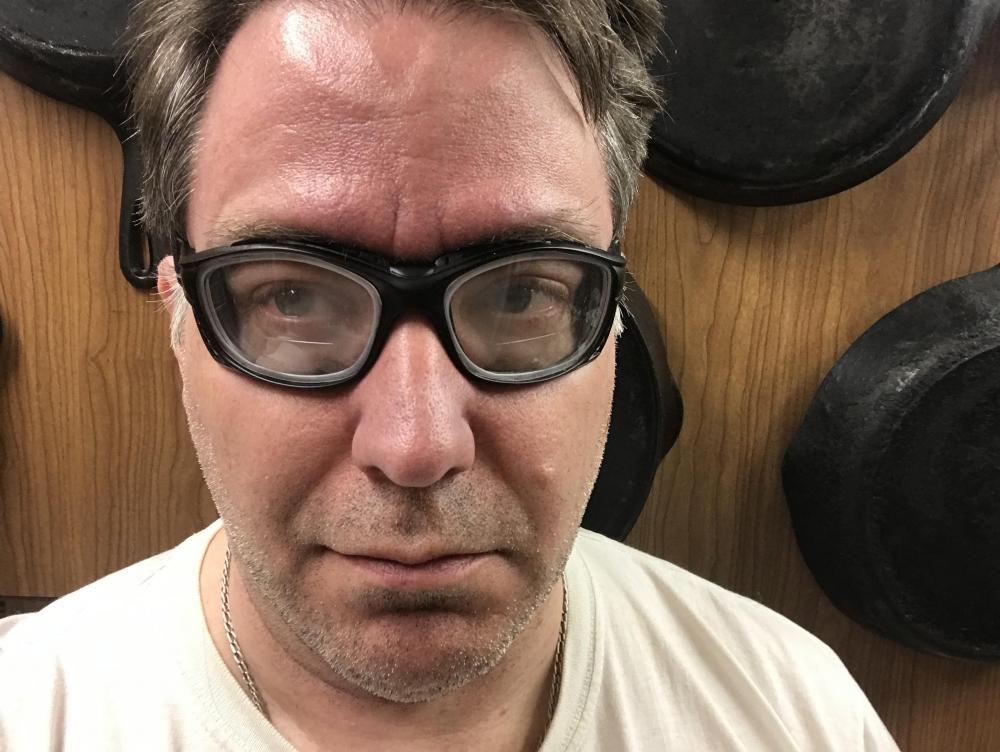-
Posts
19,410 -
Joined
-
Last visited
Content Type
Profiles
Forums
Articles
Gallery
Downloads
Events
Everything posted by JHCC
-
I've created a new Common Basic Mistakes That Beginners Should Avoid thread and requested the mods to link to it in the RTF thread in place of the "don't grind the anvil" bonus tip.
-
As you get started in blacksmithing, you will be tempted to make at least some of the following basic mistakes. Resist that temptation! Mistake #1: NEGLECTING SAFETY. You only have one set each of eyes, ears, and lungs. Protect them from dust, sparks, flying scale, etc. A two-dollar pair of safety glasses or a twenty-dollar respirator can save you thousands in medical bills. Mistake #2: GOING IT ALONE. You are a beginner, a novice, a newby -- you are, by definition, inexperienced and ignorant. There is no shame in that; that's simply where you are right now. However, trying to learn on your own is incredibly slow. In order to get better, you will need information and help. Information can come from books, this forum, good online videos (see below), and especially from actually spending time with other smiths, whether in a class, a smithing association's meetings (local, national, or international), or just getting together with smithing friends to smack some metal with a hammer. Just remember that to work from descriptions, you need the background and jargon to understand them (for example, "cherry red" is a bright orange color, based on the old pie cherries and not the "modern" Bing cherries). Help comes from submitting yourself and your work to the critique of more experienced smiths -- whether online or in person -- so that you can learn what you're doing wrong. Just spending an afternoon with a smith that knows what they are doing can cut 6 months off your learning curve! Get help whenever you can. This leads us to: Mistake #3: NOT TAKING CRITICISM. No smith is perfect; no-one is so good that they can't improve. (Indeed, the very best smiths are often those who are never satisfied with the quality of their work and are always trying to get better.) We learn more from our mistakes than we do from our successes, but only if we are willing to look at those mistakes with clear eyes and a commitment to do better next time. Listen to the voices of people with more experience than you, because they can help you understand what you did wrong or what you can do to improve or what's holding you back. Don't get offended if the criticism can seem a bit harsh at times; the general assumption here is that if you post your work for critique, you actually want people's honest opinions. Mistake #4: WORKING TIRED AND THIRSTY. Fatigue and dehydration cloud your judgment, weaken your grip on your hammer and your workpiece, and destroy your hammer control. Stopping to rest is almost never a bad idea. Take a drink of water while you're at it. If you have limited time for forging, ask yourself this: would you rather take a little extra time to get it right, or spend a lot of time fixing the mistakes you made because you were tired? STOP before you make an unrecoverable mistake or hurt yourself! (See Mistake #1.) Mistake #5: GETTING ALL YOUR INFORMATION FROM YOUTUBE. There is some excellent information on YouTube (some of which is linked HERE), but there is a LOT that is questionable, inefficient, or downright dangerous. Look with a critical eye: don't take someone with barely more experience than you filming their own learning process as an authority or a model to be copied. (See Mistake #1.) Until you have the experience and background to be able to evaluate if the person actually knows what they are doing, it's just the blind leading the blind. (Also, video cameras and the human eye sense the color of glowing steel very differently, and YouTube is NOT the place to learn how to judge your workpiece's temperature!) Mistake #6: NOT PLANNING AHEAD. Always think about what's next. Where's the next hammer blow going and why? What tool(s) do I need right now? What's the next book I'm going to read, class I'm going to take, skill I'm going to learn, project I'm going to try? Do I have the skill/tools/strength/materials to do X, and if not, how do I get them? What kind of budget do I have for this, and am I using it wisely? Not planning ahead -- whether you're talking about the most immediate decisions or the longest term -- wastes fuel, money, effort, and (the most precious and irreplaceable resource of all) time. Mistake #7: GRINDING OR MILLING THE FACE OF AN ANVIL. The hardened face is quite thin and many an anvil has been destroyed by folks trying to improve it *before* they know what makes an anvil good! (Sharp edges are generally a BAD thing for instance). Use your anvil for a year (2000 hours) before you make any changes that can not be undone. That flaw may very well be a feature that you can use. Mistake #8: USING A HAMMER THAT'S TOO HEAVY. It takes time to build up the strength, control, and hand-eye coordination necessary for swinging a big hammer. Start small. You'll get more done with less risk of injury. (See Mistake #1.) Mistake #9: USING PORTLAND CEMENT OR PLASTER OF PARIS IN A FORGE. It doesn't matter what you saw on YouTube; that stuff will degrade -- sometimes explosively; see Mistake #1 -- at forging temperatures. It's ineffective and a waste of time and money. Mistake #10: TRYING TO HARDEN MILD STEEL. It's a frustrating exercise in how to waste time and fuel, and at the end of the day, it'll still be soft. If you want it to harden, use a hardenable material. Mistake #11: TRYING TO MAKE A SWORD FOR YOUR FIRST PROJECT. Unless you're working under the close supervision of a qualified instructor, a sword -- any blade, really -- is way beyond your skill level as a beginner, and any sharp object that you make is very likely to be a hazard to you and others. (See Mistake #1.) Mistake #12: USING REBAR. Everyone starting out wants to make things from rebar, probably because it's readily available and cheap. Don't. There are other materials that just as inexpensive, that handle better, and that don't have rebar's drawbacks. Use those. (NOTE: This is not an exhaustive list, as the human capacity to make mistakes is practically infinite. Suggestions for additions are welcome. There are some other good IFI threads on basic mistakes, especially https://www.iforgeiron.com/topic/28858-common-beginner-mistakes/; take some time to read those too.)
-
Because we didn't have a "Common Beginner's Mistakes" thread! If someone does create such a thing, then we'll replace that caution with a link to that thread.
-

How many anvils do you actually need ?
JHCC replied to BartW's topic in Anvils, Swage Blocks, and Mandrels
I have two: a 148 lb. Mousehole (AKA The Undisputed King of Anvils) which has my treadle hammer attached and a striking anvil/portable hole that I welded up myself from various pieces of scrap. The latter has a number of accessories that fit the hardy hole (dishing form, raising stake, guillotine tool, drifting saddle, etc), and I also have a chunk of railroad track that can be rested on top in a number of different configurations. I have yet to exhaust the possibilities of these two tools, but I wouldn't say no to a 300+ lb. double-horn anvil of some variety. -
"Read This First" is specifically about how to get the most out of the forum (navigation, quoting policy, asking questions, etc), not a general how-to about smithing.
-
By the way, here are my new prescription (bifocal) goggles: One nice thing about these is that you can swap the earpieces for an elastic strap. That means that the strap from my respirator and the pads of my ear protectors aren’t pushing the earpieces into the side of my head.
-
A little shallow for a side-blast, but it could be made to work. The central pedestal would get in the way of a bottom-blast tuyere.
-
-

What do you think of my slitter?
JHCC replied to Xavier F-C's topic in Slitters, Punches, Drifts, etc
Unhandled punches and chisels are fine when you're hitting them with a hand hammer. Handled punches are best when you're using a powered hammer or have an assistant with a sledgehammer. In those cases, a missed hit can indeed do some pretty serious damage to your hand or wrist, but more importantly, the longer handle gives you somewhat more control over the placement and angle of the tool. It's also easier to see what's going on when your hand isn't in the way. -

A collection of improvised anvils
JHCC replied to Charles R. Stevens's topic in Anvils, Swage Blocks, and Mandrels
Excellent. An elegant solution. -
I like that handle on the bottle opener. Gives me some ideas to play with.
-
Even if he doesn't have any CV joints or loose bearings, he might have some springs (coil or leaf), torsion bars, axles, etc, etc, etc. Definitely want to be on his good side: a busy mechanic is an unending supply of quality scrap.
-

My workshop and a knifemaking course
JHCC replied to BartW's topic in Blacksmithing, General Discussion
That's actually from Mabel Collins (the Theosophist, author of "Light on the Path"), not Socrates (or the Buddha or Lao-Tzu etc etc). -
If you are friends with a mechanic who can give you an old CV joint, you can take one or more of the bearings from that. Just clean off the grease before you pop it in your pocket. Some people seem to like a 1" bearing, but I have no idea why. Rebound is independent of the size or weight of the bearing dropped.
-
Side issue: you did rigidize the ceramic wool in your forge, right?
-
These came in the mail today: prescription safety goggles with bifocal lenses. Not sure how I feel about these. They are supposed to have an anti-fog coating, but they fog up pretty easily. They also have the reading lens section in a slightly awkward location. I’m interested in seeing how they are in actual use.
-
I would call that a “table on wheels” or “movable table”. A “trolley table” would typically have much larger wheels that were an integral part of the design.
-
Adding a 2x90 grinder to my shop was a game-changer. I can only imagine what it’s going to be like for you.
-
What are the overall dimensions?
-
Thanks for the update. Good to see Zoro and Ridgid standing behind their service and product, respectively.
- 49 replies
-
- hard
- peddinghaus
-
(and 1 more)
Tagged with:
-
A lot of cheap cast iron anvils are cast with that line precisely to deceive the unwary. $3USD/lb for cast iron (if that is what it is, as seems likely) is pricey.
-
It’s an anvil.
-
How much you need?
-
Be careful, though: an untested piece of steel might turn out to be hardenable and snap at the most inopportune moment.



